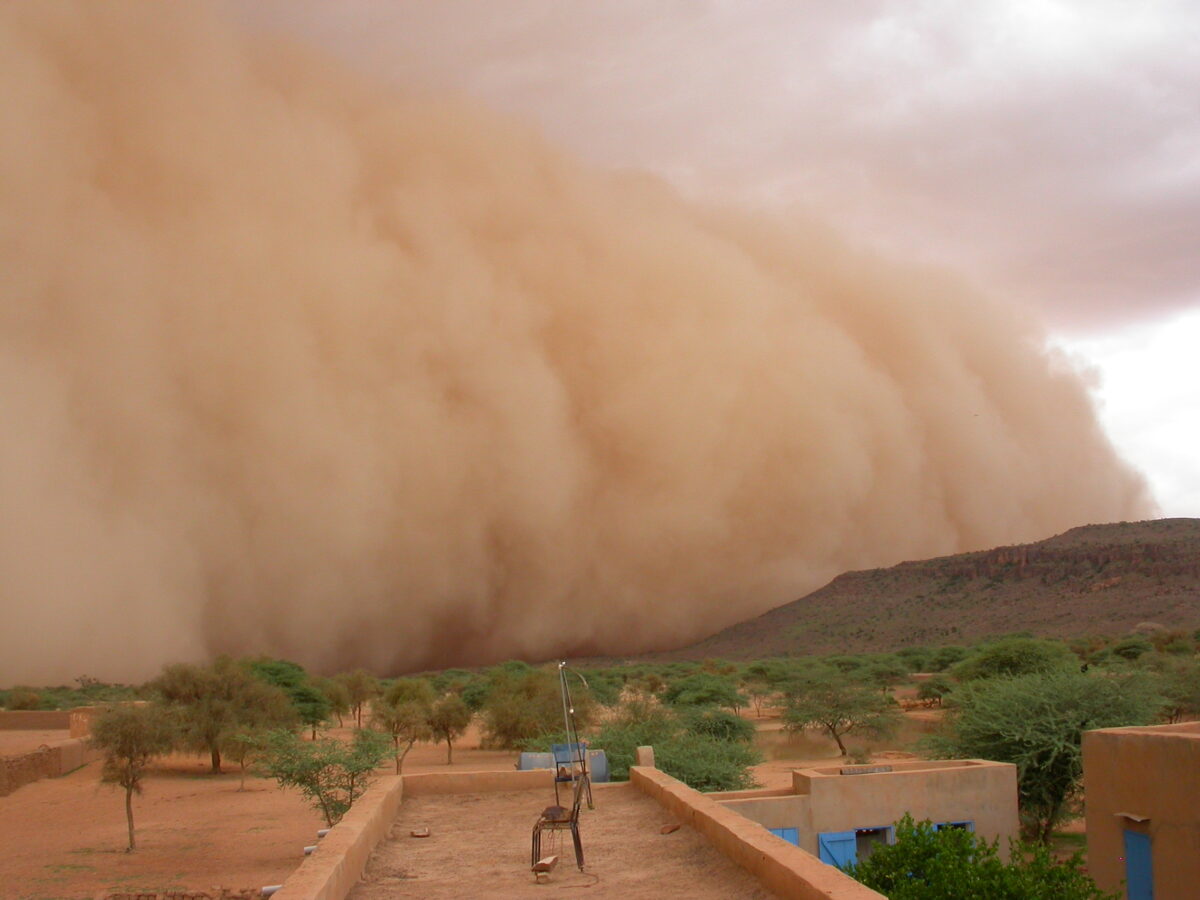Dust from soil erosion due to wind can affect human health, traffic, and, on a larger scale, climate. In an environment that has vegetation—which blocks erosion—there are different ways to estimate the amount of soil that wind sweeps into the air. Pierre et al. compare different emission models, using data from the Sahel region in Africa as a case study.
From April to September, the authors surveyed 1-meter plots along 1 kilometer in the semiarid and somewhat grassy Sahel, where monsoons cause strong seasonal dynamics. They collected data on the amount of grass in each square, the moisture of the soil, and the speed of the wind blowing over it. Using these data as input to a dust emission model, they found that soil moisture decreases the dust emission by 27% in mass.
The authors evaluated different numerical schemes for determining how the vegetation would inhibit dust emissions. Depending on the approach used, the vegetation appeared to decrease the amount of dust emissions by 6% to 26% (in mass) compared to soil with no grass. Though the difference between the various schemes was not negligible, the authors explain, the schemes offered a “remarkably coherent” picture of dust emissions. (Journal of Geophysical Research: Earth Surface, doi: 10.1002/2014JF003177, 2014)
—Shannon Palus, Writer
Citation: Palus, S. (2014), Researchers investigate the impact of vegetation on erosion, Eos, 95, https://doi.org/10.1029/2014EO021203. Published on 29 December 2014.
Text © 2014. The authors. CC BY-NC 3.0
Except where otherwise noted, images are subject to copyright. Any reuse without express permission from the copyright owner is prohibited.

